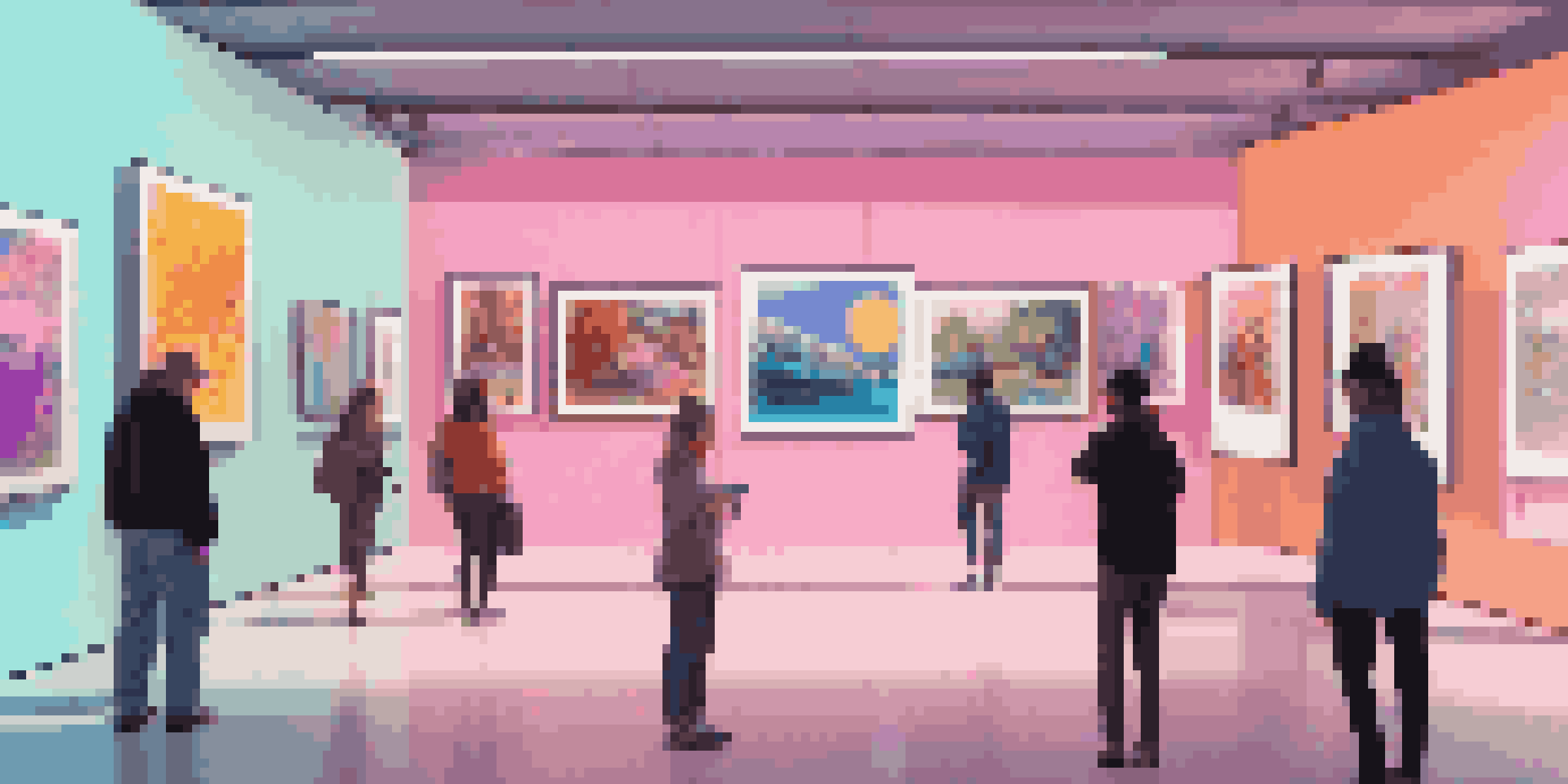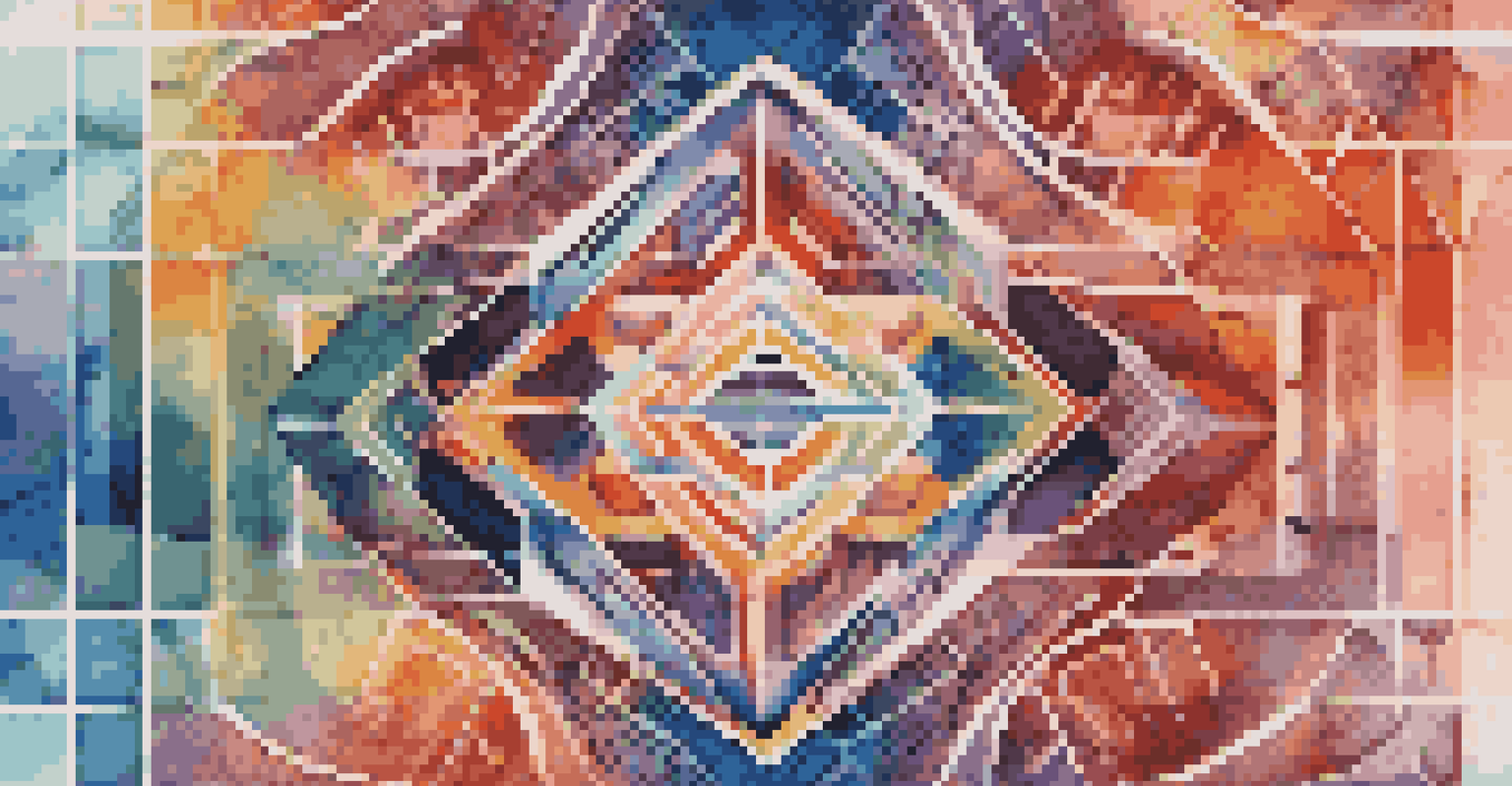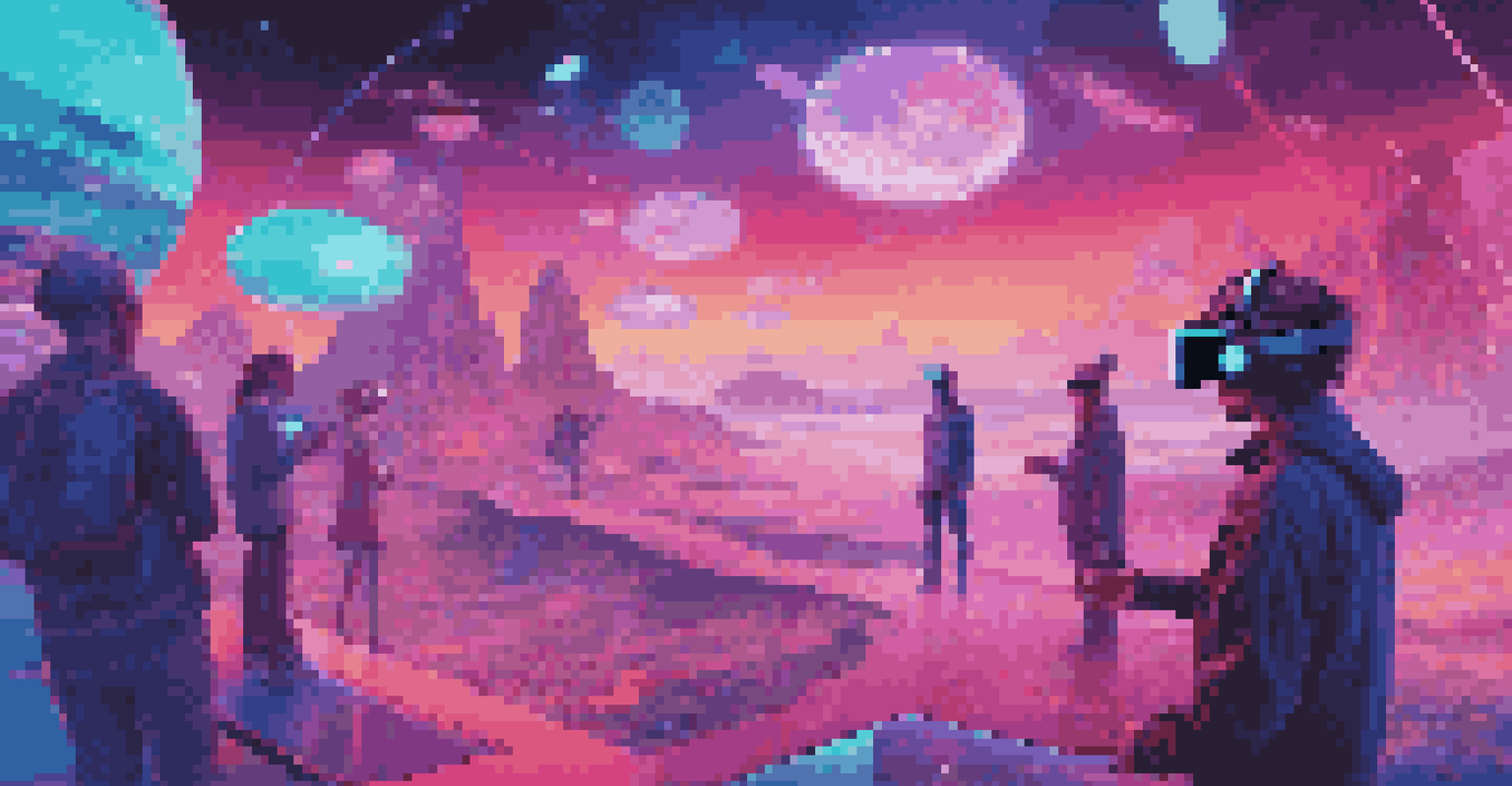Digital Collectibles and NFTs: The Blockchain Revolution

What Are Digital Collectibles and NFTs?
Digital collectibles are virtual items that can be owned, traded, and sold online. These can range from digital art to virtual trading cards, and they often carry a unique identifier that proves ownership. NFTs, or non-fungible tokens, are a specific type of digital collectible that use blockchain technology to verify authenticity and ownership.
The future belongs to those who believe in the beauty of their dreams.
Unlike traditional collectibles, NFTs cannot be exchanged on a one-to-one basis because each one is unique. Think of them like rare stamps or baseball cards; each has its own value based on rarity and desirability. This uniqueness is what makes NFTs so appealing to collectors and investors alike.
In essence, NFTs transform the way we view ownership in the digital realm. They provide a sense of security and provenance that was previously difficult to achieve with digital goods, making them an exciting development in the world of collectibles.
The Role of Blockchain in NFTs
Blockchain technology serves as the backbone for NFTs, ensuring transparency and security in ownership. Each NFT is recorded on a blockchain, which is a decentralized ledger that maintains a permanent record of all transactions. This means that once an NFT is created and sold, its history can be traced back to its origin.

This level of transparency is crucial for collectors, as it helps mitigate issues like fraud and duplication. For example, if you were to buy a painting, you would want to ensure it's an original and not a counterfeit. Similarly, the blockchain provides that assurance for digital assets.
What are NFTs and Digital Collectibles?
Digital collectibles, especially NFTs, use blockchain technology to verify ownership and authenticity, making them unique and valuable.
Moreover, because blockchains are decentralized, no single entity controls the data. This democratization of ownership means that anyone can participate in the NFT marketplace, paving the way for a diverse range of creators and collectors to engage without gatekeepers.
The Rise of Digital Art and NFTs
In recent years, digital art has exploded in popularity, largely thanks to NFTs. Artists can now sell their work directly to collectors, bypassing traditional galleries and auction houses. This shift not only increases artists' profits but also allows them to reach a global audience instantly.
Art is not freedom from discipline, but disciplined freedom.
For instance, the sale of Beeple's digital artwork for $69 million at a Christie's auction marked a significant moment in the art world. It demonstrated that digital art holds immense value, and that NFTs are reshaping how we define and perceive art itself.
This newfound recognition has encouraged many artists to explore digital mediums, creating a vibrant community that thrives on innovation. As more people embrace digital art, the demand for NFTs continues to grow, further fueling this creative renaissance.
Collecting and Trading NFTs: How It Works
Collecting NFTs can be an exciting venture, but it requires understanding how to navigate the marketplace. Platforms like OpenSea and Rarible allow users to browse, buy, and sell NFTs with ease. Users create digital wallets to store their NFTs, similar to having a bank account for digital currencies.
When trading NFTs, collectors often keep an eye on market trends, much like stock traders do. Prices can fluctuate based on popularity, rarity, and demand. For example, a limited-edition NFT might sell for thousands of dollars, while others may not hold as much value, making it essential for collectors to do their research.
Blockchain Ensures NFT Security
Blockchain technology provides transparency and security for NFTs, allowing collectors to trace ownership and mitigate fraud.
Moreover, many collectors enjoy the thrill of hunting for unique pieces, much like treasure hunters searching for valuable artifacts. The combination of art, technology, and community creates a dynamic environment that keeps collectors engaged and excited.
The Potential Pitfalls of NFTs
While NFTs offer exciting opportunities, they also come with potential pitfalls that collectors should be aware of. The market can be volatile, with prices soaring and plummeting within short periods. This unpredictability can lead to significant financial losses for those who invest without proper research.
Additionally, the environmental impact of blockchain technology has raised concerns. The energy consumption required for minting and trading NFTs can be substantial, prompting a discussion about sustainable practices in the industry. Some platforms are addressing this by exploring eco-friendly blockchain solutions.
Lastly, issues surrounding copyright and ownership rights can complicate the NFT landscape. Buyers must ensure they fully understand what rights they are acquiring when purchasing an NFT, as some may only provide ownership of the digital asset without any additional usage rights.
The Future of Digital Collectibles and NFTs
As digital collectibles and NFTs continue to gain traction, their future looks promising. Industries beyond art—like gaming, music, and real estate—are beginning to explore the potential of NFTs. For instance, in gaming, players can own unique in-game assets that can be traded or sold, giving them real value.
Moreover, as technology evolves, we may see more sophisticated uses for NFTs, such as virtual reality experiences or interactive digital art. This integration could create new forms of engagement, allowing collectors to experience their assets in ways never thought possible.
Navigating the NFT Marketplace
Collecting and trading NFTs requires understanding the marketplace dynamics and doing thorough research to make informed investments.
Ultimately, the future of NFTs and digital collectibles hinges on innovation and creativity. As more people recognize their potential, we can expect an even more vibrant ecosystem where artists, collectors, and enthusiasts collaborate to shape the digital landscape.
Getting Started with Your Own NFT Collection
If you're intrigued by the world of NFTs and want to start your own collection, the first step is to create a digital wallet. This wallet will enable you to store cryptocurrencies and NFTs securely. Platforms like MetaMask are popular choices for beginners and are relatively easy to set up.
Once your wallet is ready, you can explore various NFT marketplaces to discover art, music, or collectibles that resonate with you. Take your time to browse and learn about different artists and their works, as this can enhance your collecting experience. Don't hesitate to engage with the community, as networking can lead to valuable insights and opportunities.

Lastly, remember to invest wisely. Like any investment, it's essential to do your homework and understand what you're buying. Start small, and as you become more comfortable, you can gradually expand your collection while enjoying the exciting journey of digital collectibles.